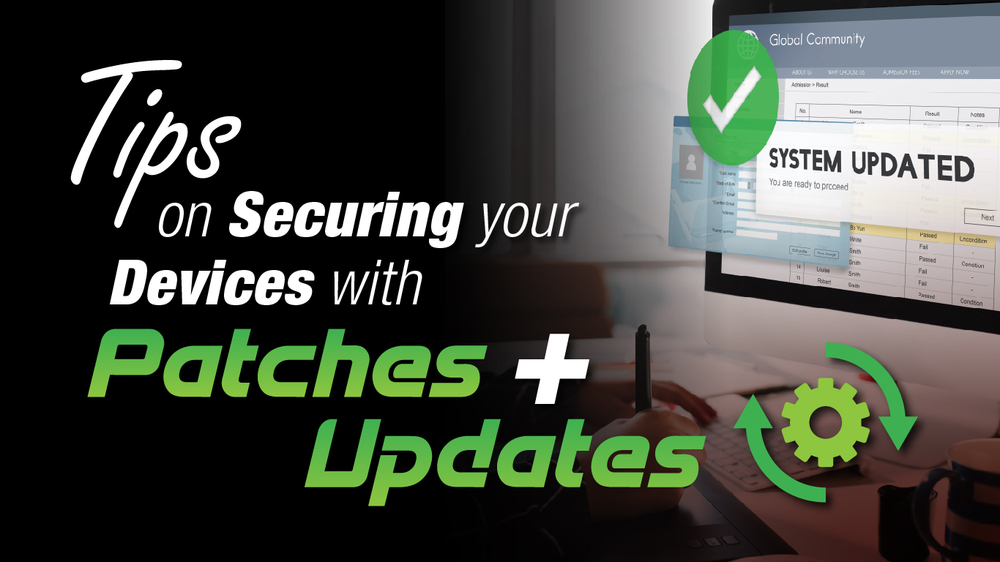Remember the good old days when you could leave your back porch door unlocked? Then, one day you added a simple lock. And today, you’ve got a deadbolt and a Ring to monitor your stoop from anywhere! Keeping up with patches and software updates is the virtual equivalent to bolstering your home security as new safety measures come to market.
We’ve talked about the very tempting “Remind me later” button, but don’t give in! When your computer (or phone) tells you it’s time for an update or a patch, do it right then. These patches fill in security holes and repair bugs that could potentially let very damaging threats in. Here are the steps you can take to ensure optimum computing and security:
· Ensure software updates and patches are current. Revisions to software ensure that not only are security vulnerabilities addressed, but that functionality is optimized. Why shortchange yourself (and leave yourself unprotected) when you can be getting more robust functionality? And at this point, you can even set up your computer to complete these updates automatically (no “Remind me later” click required!).
· Update your operating system. If your system seems to run slow or not play well with new applications and programs, or if you have trouble accessing files created by users with newer systems, it’s time to research and upgrade to a newer, or more applicable, OS.
· Update drivers periodically. Drivers are essentially “go-betweens”, connecting software and hardware like speakers, USB drives, mice, and keyboards. If they are out of date, the communication breaks down and your hardware may slow down or get stuck. As with most updates, you can simply type “Check for updates” in the Windows search window (or the Managed Software Center for Macs) to find the latest updates.
· Don’t ignore end–of-life (EOL) notifications. Sometimes, software vendors will quit supporting older software. This can happen for many reasons, but the vendor almost always has an upgraded version of the software to replace the obsolete EOL one. Unsupported software is often exploited since attackers know there will be no more changes or updates. This may mean that your machine doesn’t meet certain hardware requirements (and you may need a new computer) or that you must uninstall and reinstall your OS. If all else fails, it may be time to take your machine to a repair shop to ensure you’re able to continue to update.
And remember: Good cybersecurity practices aren’t just for ourselves. Every virus or piece of malware you shut down through your diligent efforts is a virus that doesn’t get emailed or uploaded to a friend, colleague, client, or family member who might not be as “patched” as you!




